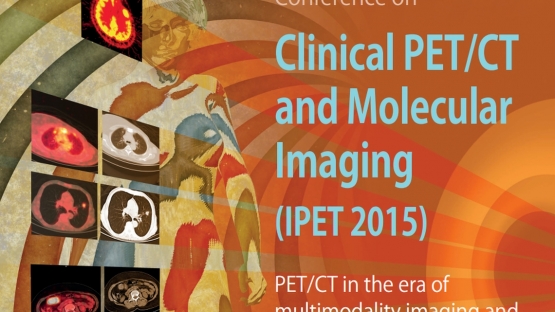A unique, multidisciplinary conference in nuclear medicine and radiology will open at the IAEA on Monday, with 600 delegates from around the world, a third of them from developing countries.
The week-long International Conference on Clinical PET-CT and Molecular Imaging (IPET 2015): PET-CT in the era of Multimodality Imaging and Image Guided Therapy provides a unique chance for nuclear medicine physicians, radiologists, oncologists, nuclear medicine technologists, radiopharmacists and medical physicists to showcase their research and learn from peers and experts, said attendees while preparing for the conference opening on Monday.
“There is no conference like IPET,” said Claudio Tinoco Mesquita, President of the Brazilian Society of Nuclear Medicine, explaining that IPET is particularly important for practitioners in developing countries to meet and share experiences. “From this conference, we can bring a lot back to our country to change the way that we help our patients.”
PET-CT, or positron emission tomography-computed tomography, is a medical imaging technique that combines two types of medical imaging devices that sequentially scan the body and track the distribution of special drugs labelled with radioactive compounds in a patient to map out and create images of the body. The resulting images are used to evaluate and manage diseases, like cancer and health conditions related to the heart, infections, neurology, and other areas.
One aspect that makes this conference unique is that it provides professionals from multidisciplinary fields and regions around the world a forum to discuss the current status and trends in nuclear medicine, radiology and radiopharmaceutical sciences. This helps in developing comprehensive approaches to patient care.
“Drawing on the tools and techniques in different areas of medicine can help us in tailoring how we diagnose and treat patients,” said Diana Paez, Head of the Nuclear Medicine and Diagnostic Imaging Section at the IAEA. “Taking this multidisciplinary and multimodality approach allows us to be more precise in how we can pinpoint and evaluate our patients and provide them with the most appropriate treatment.”
Attendees will explore important clinical aspects of specific diseases or conditions and the role of PET-CT and other imaging modalities in providing appropriate diagnostics and treatment.
Topics covered during the conference will include the latest information on PET–CT, molecular imaging, diagnostic imaging and radiation treatment planning for different health conditions and types of cancer, including breast, lung, colorectal, as well as radiopharmaceutical production and quality assurance. There will be opportunities for participants to learn more about developments related to medical physics, instrumentation and data analysis; radiation protection for personnel and dose reduction for patients; and country experiences in the fields. Besides plenary and thematic sessions and poster presentations, ‘read with the experts’ sessions focusing on interactive case study reviews will be held throughout the meeting.
For those of you not able to attend the conference, follow the proceedings on the livestream.
“This kind of conference opens your eyes and shows you another way to do things. It is a unique opportunity to work with the most important people working in the area,” said René Francisco Fernández Belmar, a resident in nuclear medicine at the University of Chile.
A special session will also be held for the first time on ethics, leadership and education in nuclear medicine and radiology to help prepare future leaders. In addition, Continuing Medical Education credits will also be awarded to participants as part of an initiative to provide support to professionals to maintain their certification.
Bringing experts and peers together
Throughout the conference, participants will have the opportunity to have their research evaluated by top-level experts in the field and find out what is happening at the forefront of these medical areas, Paez said.
“I am looking forward to seeing the renowned experts in the field and to share knowledge with them as well as to present the latest of what I am doing in my country. It is a great opportunity and platform to present to such an audience,” said Moses Modiselle, nuclear medicine physician at the University of Pretoria’s Steve Biko Academic Hospital in South Africa.
While many conferences have significant fees and require costly long-distance travel, IPET participants had the opportunity to submit abstracts that would also allow them to be considered for a grant to attend the conference. Almost 200 grants were awarded, making it possible for several participants from developing countries to participate.
“By attending this kind of high level conferences we can improve our practice. Besides that, we can establish cooperation with some sites and develop networks to foster our clinical practice,” said Claudia Gutierrez, Chief of Medical Education at Fundacion Cardioinfantil in Bogota, Colombia.
Follow the livestream of the conference proceedings from 5 to 9 October and the #IPET2015 hashtag on Twitter, Facebook, and Instagram.
This kind of conference opens your eyes and shows you another way to do things. It is a unique opportunity to work with the most important people working in the area.


